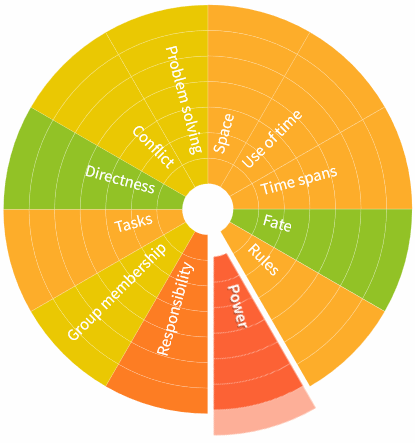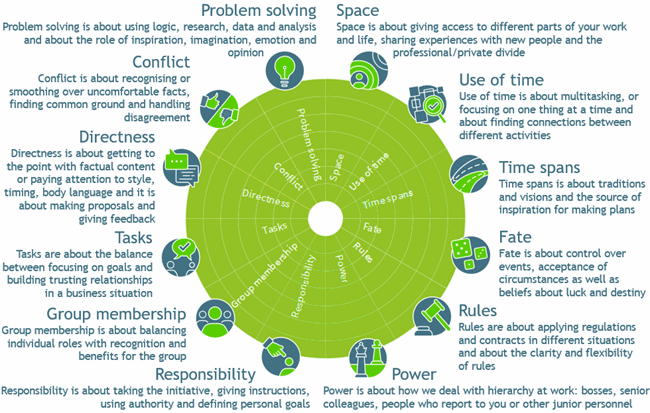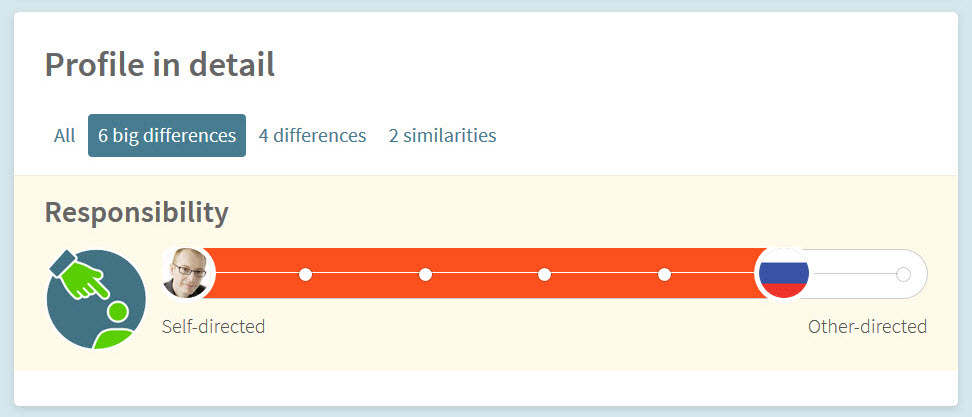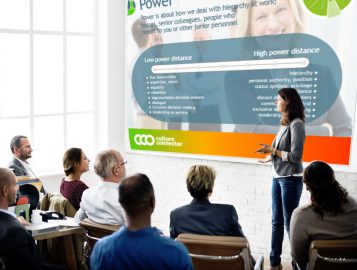The Argonaut wheel

Everyone who uses CultureConnector gets a cultural profile based on 12 key areas where differences and common ground can mean success or failure in cross-cultural work.
Colours indicate whether there is difference or similarity with the culture, team or person.
The 12 key differences
The differences, sometimes called dimensions, are all related to practical situations at work. For example, the Tasks difference is very relevant when getting to know new people, forming new teams and partnerships, as well as at the start of projects. It can also be relevant in micro-situations, such as a single meeting.

 | SpaceSpace is about giving access to different parts of your work and life, sharing experiences with new people and the professional/private divide |
 | Use of timeUse of time is about multitasking, or focusing on one thing at a time and about finding connections between different activities |
 | Time spansTime spans is about traditions and visions and the source of inspiration for making plans |
 | FateFate is about control over events, acceptance of circumstances as well as beliefs about luck and destiny |
 | RulesRules are about applying regulations and contracts in different situations and about the clarity and flexibility of rules |
 | PowerPower is about how we deal with hierarchy at work: bosses, senior colleagues, people who report to you or other junior personnel |
 | ResponsibilityResponsibility is about taking the initiative, giving instructions, using authority and defining personal goals |
 | Group membershipGroup membership is about balancing individual roles with recognition and benefits for the group |
 | TasksTasks are about the balance between focusing on goals and building trusting relationships in a business situation |
 | DirectnessDirectness is about getting to the point with factual content or paying attention to style, timing, body language and it is about making proposals and giving feedback |
 | ConflictConflict is about recognising or smoothing over uncomfortable facts, finding common ground and handling disagreement |
 | Problem solvingProblem solving is about using logic, research, data and analysis and about the role of inspiration, imagination, emotion and opinion |
Scales
People, teams and cultures can be placed on scales for comparison.

A gap of zero or one indicates cultural similarity. Gaps of increasing size appear in increasingly red colours.
Gaps can be an advantage, especially in well-led and culturally-competent diverse teams and partnerships. Gaps can also be a basis for success when different orientations bring flexibility to deal with a variety of challenges, connect with diverse customers, and to find talent for different roles. Teams and organisations who know how to manage their differences can also become the best at forming solutions and getting things done.
Research and practice
These key differences have been used in intercultural training and consulting since the 1990s. The original research which led to this approach to cultural difference was completed as doctoral work at Georgia State University by Carey Coghill. It has been successfully applied across different economic sectors, different cultures, at different scales and in a wide variety of training formats for more than two decades.
For trainers
Twelve ways to make sense of cultural differences when training teams, leaders and expatriates
How can we take training participants’ instinctive reaction and curiosity and bring transferable understanding? Here are 12 aspects of culture that can bring that “ah-ha” moment of insight in intercultural training.

